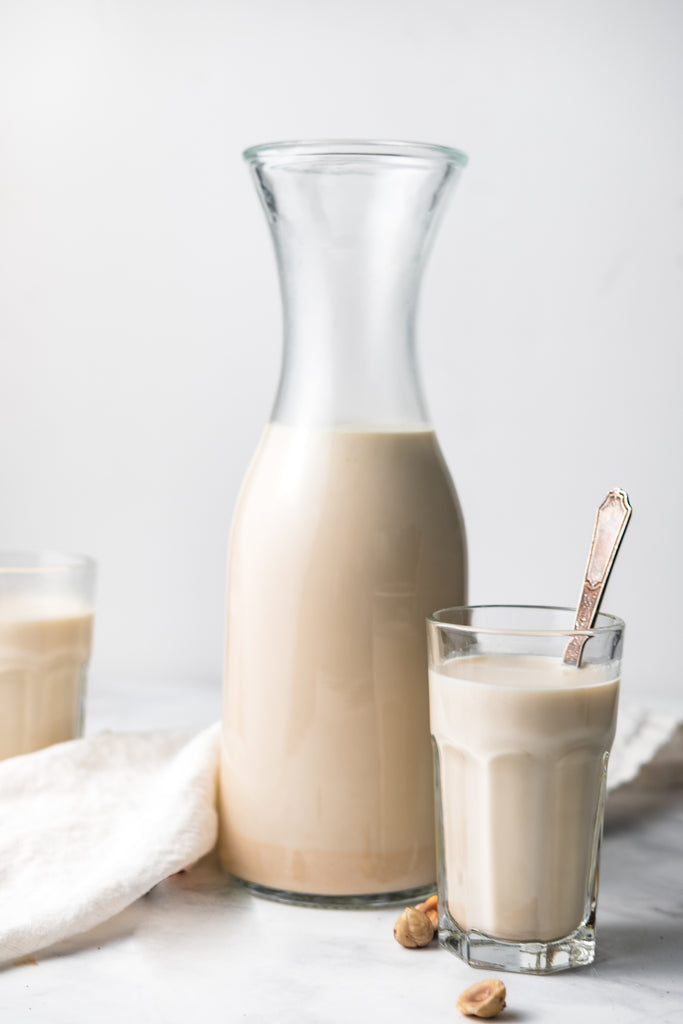Hazelnut Milk
With its rich, creamy, and slightly roasted flavor, Hazelnut Milk makes for the perfect addition to your morning cup of coffee, cereal, or baking recipes. Aside from it’s wonderful flavor, Hazelnut Milk is high in naturally-occuring vitamins and minerals like manganese, copper, iron, calcium, and potassium- It’s sure to become a new family favorite! Try our homemade hazelnut Nutella milk , or make leftover hazelnut pulp Nutella , for a chocolate twist on the recipe.
PREP TIME: 5 MINS
SERVINGS: 5-6

Instructions
- Place the hazelnuts and dates (or maple syrup) in the filter basket.
- Attach the filter basket to the top of the Almond Cow and twist in the direction of the close arrow to secure.
- Fill the Almond Cow base to the MIN line (5 cups) with water, attach the top.
- Plug in the Almond Cow and press the cow start button! It will run through 3 automatic stages. When the light stops flashing, your milk is ready!
Ingredients
- 1 cup hazelnuts (unsoaked) (see option for roasted hazelnuts below)
- 3 chopped, pitted dates or 1-2 tbsp maple syrup (optional)

